When adapting a play about destiny, changing the ending might seem like tempting fate, especially when that play is considered one of the greatest of the Spanish Golden Age. But for guest director Dominique Serrand, reimagining the classic tale Life Is a Dream for an audience of today means not only exploring timeless themes, but also transforming a stock female character into the story’s vehicle of change and giving her the new closing lines.
Go to the web site to view the video.
Serrand got help in his reimagining from doctoral candidate Kari Barclay, who served as dramaturge in this production, ensuring that the script and the artists’ vision were interlocked.
“We are fortunate to have one of the top theater and performance studies PhD programs in the country, which is based on the idea of integrating theater scholarship and creative practice. That is exactly what dramaturges do these days, and it was only a natural step forward to include dramaturges on production teams of our main stage shows,” said Branislav Jakovljevic, chair of the Department of Theater and Performance Studies. “I very much hope that before too long all of our productions – second stage, capstones and student group shows – will have dramaturges on their creative teams.”
Pedro Calderón de la Barca’s 1635 drama is about a prince who has been imprisoned since birth because his father, the king, was told his son was destined to become a tyrant. When the prince is a grown man, the king releases him as a test and the prince’s behavior seems to indicate that he is fulfilling the prophecy. However, despite those ominous signs, 17th-century sensibilities obliged Calderón to write a happily-ever-after ending.
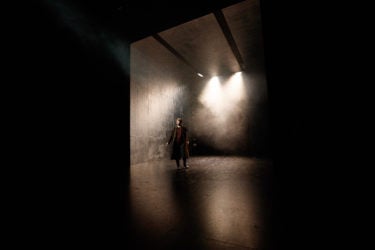
Image credit: Frank Chen

Image credit: L.A. Cicero
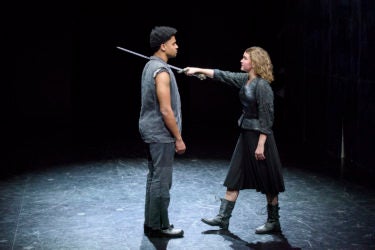
Image credit: L.A. Cicero
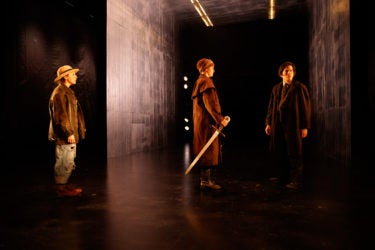
Image credit: Frank Chen
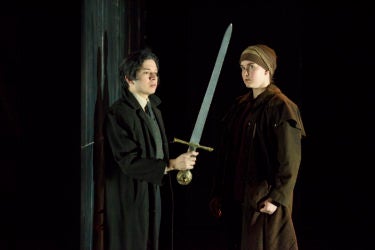
Image credit: L.A. Cicero
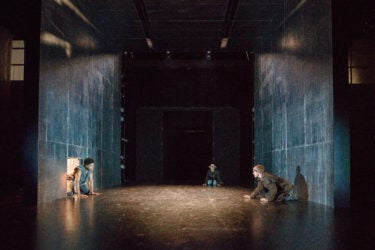
Image credit: Frank Chen
In Serrand’s version, which he wrote with his longtime collaborator Steve Epp, a happy ending is not guaranteed and there is no obvious resolution. Rather, Rosaura, a stock character in the original who becomes the change agent in the adaptation, closes the play with an unanswered question about truth and reality (spoiler alert), “Are all sorrows, joy, pain like dreams – the true ones taken to be false, the false ones to be true?”
Barclay, doctoral candidate in theater and performance studies, said of the new version of the play, “We didn’t have to feel that the text was immovable. We could shape it into what worked best for us. This adaptation keeps the vitality and powerful images of Calderón’s script while giving actors the freedom to introduce their own takes through movement and nonverbal language. We didn’t need to take Calderón as a given but could comment on him from our current context.”
Barclay studied Life Is a Dream within an academic context while researching race, gender and socioeconomic status in 17th-century Spain. When considering the character Rosaura, and the many lenses and vocabularies that we use today to look at gender, he noted the contrast between the original and the adaptation: “In today’s queer lexicon, Rosaura is genderful. She dives into masculine attire and presentation, by the middle takes on the feminine, and in the end doesn’t feel the need to choose. She can be masculine and feminine at the same time; 1635 Spain and the rest of Europe would have had an even starker gender binary, but in any context, people find ways to survive and push boundaries beyond the conventional.
“At the same time, Rosaura finds herself surrounded by powerful men who are eager to take advantage of their power. Rosaura’s journey is one of taking vengeance on those who break their promises or try to violate her consent. This journey feels timely today as women continue to seek justice against powerful men who perpetuate harassment and assault.”
Jakovljevic said the adaptation benefited from Barclay’s role. “In the past, dramaturges were considered in-house critics who aided the directors with their knowledge of dramatic and theatrical history and theory,” he said. “Recently, in Europe and the U.S., the role of the dramaturge diversified significantly to become one of the key members of a creative team, not only in conventional dramatic theater, but also in devised theater and dance.”